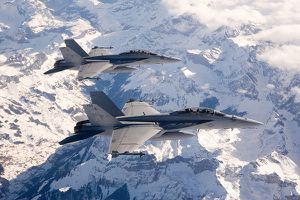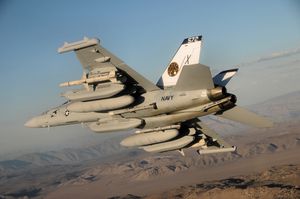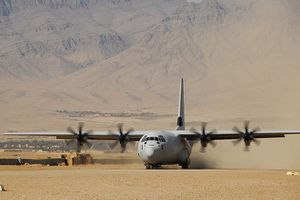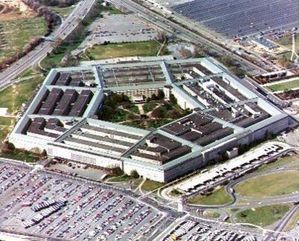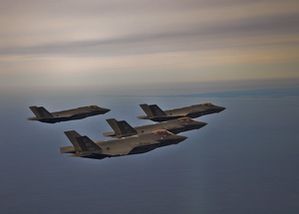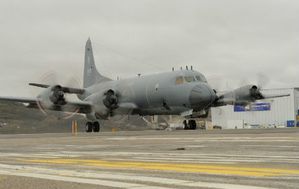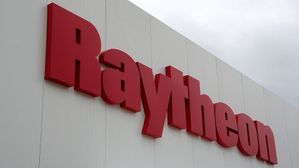
Mar. 12, 2013 - By WENDELL MINNICK – Defense News
TAIPEI — A 12-page report issued March 11 by the Center for a New American Security (CNAS spells out the disadvantages of continuing to rely on expensive, capacious vessels like aircraft
carriers with the dawn of a new type of anti-ship ballistic missile (ASBM) capable of destroying them far out at sea.
Read Report Here: http://www.cnas.org/node/10190
The paper, “At What Cost a Carrier,” by U.S. Navy Capt. Henry Hendrix, is the first in the new Disruptive Defense Papers series by CNAS. The series deals with controversial issues in U.S.
defense policy at a time when hard choices must be made.
Hendrix, a career naval flight officer, argues that the aircraft carrier, the centerpiece of U.S. naval operations for 70 years, is in danger of becoming too vulnerable to be relevant.
He also examines the life-cycle costs and utility of the aircraft carrier and recommends a new approach for U.S. naval operations that includes unmanned combat aerial vehicles (UCAVs) and
submarines armed with land-attack cruise missiles. He also argues that the Navy should drop the expensive, untested F-35 and retain the F/A-18 Super Hornet.
Hendrix writes that the aircraft carrier is in danger of becoming like the battleships it was originally designed to support: big, expensive, vulnerable and surprisingly irrelevant to the
conflicts of the time. This outcome has become more likely as the U.S. Navy continues to emphasize manned carrier aircraft at the expense of unmanned missiles and aircraft.
If the fleet were being designed today from scratch, with the technologies now available and the threats now emerging, it likely would look very different, he postulates.
With the expansion of foreign operated surveillance satellites and new long-range precision strike missiles, the carrier may not be able to move close enough to targets to operate
effectively or even survive for very long.
China is developing ways that challenge the carrier’s maneuverability and survivability. Chinese submarines (63 conventional and nuclear), surface ships (75 destroyers, frigates and one
aircraft carrier), aircraft (227 bombers and fighters), anti-ship cruise missiles (around 30 types) and swarming small craft (332 patrol boats) each pose threats to a U.S. Navy Task Force.
Hendrix writes that no weapon has captured the imagination of American naval strategists like the DF-21D ASBM. “Using a maneuverable re-entry vehicle placed on a CSS-5 missile, China’s
Second Artillery Division states that its doctrine will be to saturate a target with multiple warheads and multiple axis attacks, overwhelming the target’s ability to defend itself.”
Analysts estimate the cost of each DF-21D to be $5 million to $11 million. “Assuming the conservative, high-end estimate of $11 million gives an exchange ratio of $11 million to $13.5
billion, which means that China could build 1,227 DF-21Ds for every carrier the United States builds going forward,” Hendrix writes.
Given the 1,087-mile range of the DF-21D and the unfueled range of the F-35 at 690 miles, this causes problems.
“U.S. defenses would have to destroy every missile fired, a tough problem given the magazines of U.S. cruisers and destroyers, while China would need only one of its weapons to survive to
effect a mission kill,” according to the report.
Hendrix compares the carrier to the French knights at Agincourt who were wiped out by the English longbowmen.
Using an $11 million missile to sink a $7 billion Nimitz carrier or a $13 billion Ford carrier is upsetting. Arguably, it could take all of the 1,227 DF-21Ds at a total cost of $13.5
billion to kill a Nimitz carrier, but that seems unlikely.
China has been testing its DF-21D on an outline of an aircraft carrier in the Gobi desert. Though sinking an unprotected outline of an aircraft carrier is not the real thing, the imagery simply cannot be ignored.
Hendrix says the inefficiency of manned aviation, with its massive fiscal overhead of training, pilot currency and maintenance, is rapidly outpacing its utility.
“The idea that the United States needs a large sortie capability inexorably drives decision-makers to large carriers,” he writes. “These maritime juggernauts are expensive and hence need to
be defended by an ever-larger ring of exquisite technologies in order to launch a historically shrinking number of very expensive aircraft from ever-increasing distances that may or may not
drop their bombs.”
Advancements in surveillance, reconnaissance, global positioning, missiles and precision strike all signal a sea change in not only naval warfare, but all forms of warfare, according to the
report.
To continue to invest in aircraft carriers at this stage, to believe that the USS Ford, with a service life of 50 years, would go unchallenged on the high seas, Hendrix writes, “smells of
hubris.” The U.S. must break out of its “ossified force structure and not only get ahead of the strategic curve, but actively seek to redefine the curve.”
One solution is the development of UCAV and cancellation of the F-35 program.
UCAVs with longer range and loitering time could be operated from conventional carriers currently deployed, including light amphibious carriers.
“The new UCAVs would be flown only when operationally needed,” Hendrix writes. “UCAV pilots would maintain their currency in simulators, reducing personnel and operational costs and
extending their airframes’ lives by decades.”
This would allow the slowly declining number of carriers that would remain in the inventory until the USS Ford retires in 2065 to remain effective.
A parallel path, Henderson suggests, should include the maturation and extension of the U.S. inventory of conventional missiles. The current Tomahawk missiles are deployed on Navy cruisers,
destroyers, fast-attack submarines and, more recently, four modified Ohio-class submarines, which can carry 155 Tomahawks.
This compared to the daily sortie rate of 120 fighters a day for the Nimitz and 160 for the Ford, the Ohio guided-missile submarines (SSGN) “represent the most effective path forward in
strike warfare.”
“Super quiet, the Ohio SSGNs can penetrate enemy waters unseen, positioning themselves to unleash massive waves of precision strike weapons to take down critical nodes of enemy
infrastructure, weakening resolve and resistance from the strategic center outward,” Hendrix writes. These submarines do not need the outer defense ring of destroyers, frigates, support
ships and submarines.
Carrier strike groups are expensive. Factoring the staggering personnel numbers, roughly 6,700 men and women, and the daily operating cost of $6.5 million, the value of these in real terms
is questionable, according to the report — whereas stealthy submarines loaded with low-cost precision cruise and ballistic missiles capped with conventional warheads, as the Chinese are
doing with the JL-1/2, provide the U.S. with an elegant “one target + one missile = one kill” solution.





